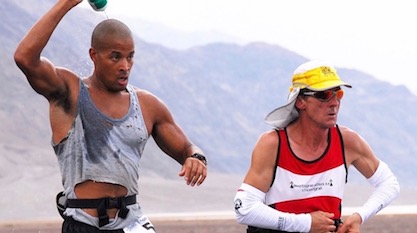 Evolution
Evolution
Origin of Long-Distance Running — More Evolution by Breaking Things


A central problem for theories of unguided evolution has always been the challenge of building complex biological novelties. Breaking things, on the other hand, is well within reach for Darwinian processes. Sometimes breaking things results in an evolutionary advance.
Interesting news out this week suggests that ancient humans won an advantage in the struggle for life when a gene, shared with chimps and other primates, broke. The result may have been increased stamina for long-distance running, an ability that sets humans apart and that let us hunt animals by chasing and finally tiring them out so thoroughly as to make them relatively easy game for us.
Destroying Not Building
Elizabeth Pennisi at Science Magazine reports on this research. From “This broken gene may have turned our ancestors into marathoners — and helped humans conquer the world”:
Despite our couch potato lifestyles, long-distance running is in our genes. A new study in mice pinpoints how a stretch of DNA likely turned our ancestors into marathoners, giving us the endurance to conquer territory, evade predators, and eventually dominate the planet….
Human ancestors first distinguished themselves from other primates by their unusual way of hunting prey. Instead of depending on a quick spurt of energy — like a cheetah — they simply outlasted antelopes and other escaping animals, chasing them until they were too exhausted to keep running. This ability would have become especially useful as the climate changed 3 million years ago, and forested areas of Africa dried up and became savannas.
What accounts for it?
Some clues came 20 years ago, when Ajit Varki, a physician-scientist at the University of California, San Diego (UCSD), and colleagues unearthed one of the first genetic differences between humans and chimps: a gene called CMP-Neu5Ac Hydroxylase (CMAH). Other primates have this gene, which helps build a sugar molecule called sialic acid that sits on cell surfaces. But humans have a broken version of CMAH, so they don’t make this sugar, the team reported. Since then, Varki has implicated sialic acid in inflammation and resistance to malaria.
In the new study, Varki’s team explored whether CMAH has any impact on muscles and running ability, in part because mice bred with a muscular dystrophy–like syndrome get worse when they don’t have this gene. UCSD graduate student Jonathan Okerblom put mice with a normal and broken version of CMAH (akin to the human version) on small treadmills. UCSD physiologist Ellen Breen closely examined their leg muscles before and after running different distances, some after 2 weeks and some after 1 month.
After training, the mice with the human version of the CMAH gene ran 12% faster and 20% longer than the other mice, the team reports today in the Proceedings of the Royal Society B.
“Mice Are Not Humans”
There’s an obvious cause for skepticism, as Pennisi reports.
“Mice are not humans or primates,” says [Andrew] Best’s adviser at UMass, Jason Kamilar, a biological anthropologist also not involved with the new work. “The genetic mechanisms in mice may not necessarily translate to humans or other primates.”
Of course. It is notable, though, that when we find evolution at work, it’s so often busy destroying not building.
We’ve noted this before. It’s a theme of Michael Behe’s The Edge of Evolution. And Ann Gauger has pointed it out in an ID the Future podcast, describing that form of “evolution” which consists of “throwing the deck chairs off to make the boat go faster.” As Evolution News put it:
A microbe that can no longer import an antibiotic, for instance, will survive and proliferate, because its import machinery is broken. That’s not really innovation; it’s just luck.
It’s genuine innovation that unguided, unintelligent evolutionary processes need to explain, something that they persistently fail to do. This is a major reason that Darwinism, like ancient man’s prey on the primordial savanna, seems increasingly exhausted.
Photo: Participants in the Badwater Ultramarathon, Death Valley, California, by Seaman Michael Lindsey, USN [Public domain], via Wikimedia Commons.
